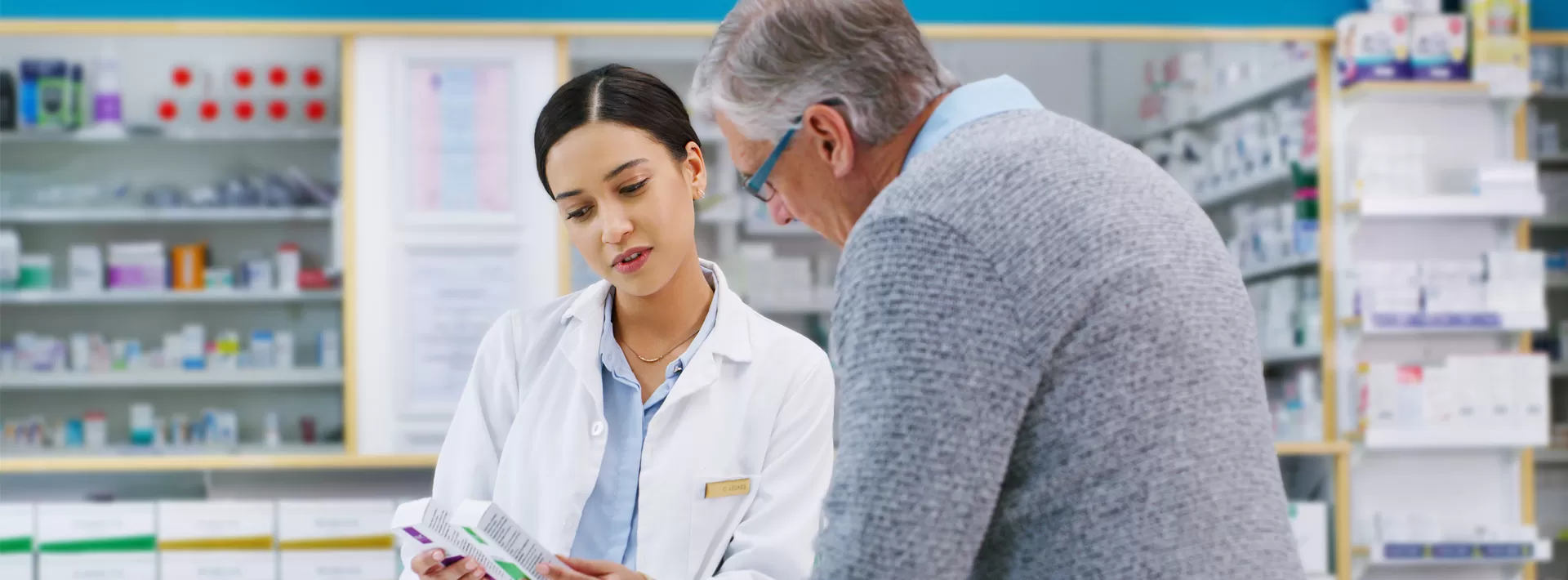Biologics vs. Biosimilars: Understanding the Difference

Maybe you’ve heard of biologics and biosimilars. You might even be taking biological or biosimilar medicines to treat cancer, rheumatoid arthritis, ulcerative colitis, psoriasis, or other health conditions. Still, maybe you have questions about what the differences and similarities are or how these drugs are developed.
Biologics revolutionized the prevention, treatment, and outlook of many serious diseases. Now, biosimilar advancements in these drugs are helping to provide expanded access to these lifesaving treatments.
Here's what research into biologics and biosimilars means for patients.
What Is a Biologic?
Biologic medicines contain substances that have been created by using living cells or organisms. Examples of biologic medicines include gene therapies, transplant tissue, recombinant proteins, stem cell therapies, and monoclonal antibodies. They are often used to treat many severe and life-threatening diseases.1,2
Biologics differ from traditional drugs in terms of material sources, structural complexities, manufacturing process, and regulatory requirements.1 As a result, biologics can sometimes have a higher price, which can create barriers to access for some patients.2
Biosimilars were created to help increase access to biological therapies and thus help improve patient outcomes.3
What Is a Biosimilar?
Biosimilars are a class of drugs designed to increase access for patients who need treatment with a biologic medicine. The U.S. Food and Drug Administration (FDA) defines a biosimilar as “a biological product that is highly similar to and has no clinically meaningful differences from an existing FDA-approved reference product” in terms of safety, purity, and potency. In other words, biosimilars are, equivalent to the biologic medications they were developed to mimic.2,3
The Biologics Price Competition and Innovation (BPCI) Act of 2009 created a regulatory pathway for the approval of biosimilars.[4] BPCI was enacted to increase treatment options, open access to medications, and foster competition for lower healthcare costs.5
In some cases, pharmaceutical companies may seek an additional designation from the FDA for a biosimilar medicine so that it is considered interchangeable with the original, or reference, medicine.3 Biosimilars are not required to have this additional designation, says Mark Latymer, Senior Director, Biosimilars Portfolio, I&I Medical Affairs, NMD at Pfizer, but some drug manufacturers apply for it to aid in substituting a biosimilar for a reference medicine at the pharmacy depending on state laws.4
Biologics vs. Biosimilars: What Are the Differences?
Biosimilars undergo rigorous testing and evaluation and meet the exacting manufacturing standards set by the FDA. Biosimilars must be proven to have the same safety and effectiveness and “no clinically meaningful differences” from the original biologic before they are approved for the market.6
Although their safety and efficacy standards are on par with biologics, some key differences between biologics and biosimilars distinguish them.
Regulatory path: All drugs undergo rigorous testing prior to approval. The approval process for biosimilars is more streamlined than it is for biologics.6 The development pathway doesn’t mean that biosimilars are less safe, less effective, or held to lower standards. The data submitted during the approval process of a biosimilar is geared toward demonstrating the clinical equivalence between it and the reference biologic while the approval process for a biologic is focused on proving its safety and effectiveness.7
Cost:Biosimilars may be less expensive than biologics, which can be attributed in part to their streamlined development process.8 According to the Association for Accessible Medicines, biosimilar competition has lowered costs for both reference products and their biosimilars, providing $7.9 billion in savings in 2020 and more than $12.6 billion in savings over the past 10 years.9
What Do These Differences Mean for Patients?
Thanks to rigorous regulatory requirements and testing to demonstrate that biosimilars are similar to reference biologics, you don't have to worry about any differences in their safety and effectiveness. In fact, since biosimilars are made with the same types of natural source material, have similar manufacturing processes, and are administered the same way, you can expect the same treatment benefits and side effects when taking a biosimilar or a biologic.10
Biologics have transformed patient outcomes for cancers, autoimmune disorders, and many other conditions.10 With increasing introductions of new biosimilars, doctors will have the opportunity to bring more high-quality and potentially lower cost treatment options to patients.9
Article References
- What are "biologics" questions and answers. U.S. Food and Drug Administration.https://www.fda.gov/about-fda/center-biologics-evaluation-and-research-cber/what-are-biologics-questions-and-answers. Last updated February 6, 2018. Accessed October 12, 2021.
- Halimi V, Daci A, Netkovska KA, et al. Clinical and regulatory concerns of biosimilars: A review of literature. International Journal of Environmental Research and Public Health.2020;17(16):5800. https://www.ncbi.nlm.nih.gov/pmc/articles/PMC7460311/. Published August 11, 2020. Accessed October 12, 2021.
- Biosimilar and Interchangeable Biologics. U.S. Food and Drug Administration. https://www.fda.gov/drugs/biosimilars/biosimilar-and-interchangeable-products. Last updated October 23, 2017. Accessed April 18, 2022.
- Implementation of the Biologics Price Competition and Innovation Act of 2009. U.S. Food and Drug Administration. https://www.fda.gov/drugs/guidance-compliance-regulatory-information/implementation-biologics-price-competition-and-innovation-act-2009. Last updated February 12, 2016. Accessed April 14, 2022.
- Biosimilars. U.S. Food and Drug Administration. https://www.fda.gov/drugs/therapeutic-biologics-applications-bla/biosimilars. Updated March 8, 2022. Accessed May 19, 2022.
- Biosimilar development, review, and approval. U.S. Food and Drug Administration. https://www.fda.gov/drugs/biosimilars/biosimilar-development-review-and-approval. Last updated October 20, 2017. Accessed October 12, 2021.
- Stebbing, J., Mainwaring, P.N., Curigliano, G., et al. Understanding the Role of Comparative Clinical Studies in the Development of Oncology Biosimilars. Journal of Clinical Oncology. doi:10.1200/JCO.19.02953
- Let’s See How Biosimilars Are Developed. Pfizer. https://www.pfizerbiosimilars.com/biosimilars-development. Accessed September 15, 2022.
- Association for Accessible Medicines. The U.S. Generic & Biosimilar Medicines Savings Report. https://accessiblemeds.org/sites/default/files/2021-10/AAM-2021-US-Generic-Biosimilar-Medicines-Savings-Report-web.pdf. Published October 2021. Accessed May 4, 2022.
- Patient materials. U.S. Food and Drug Administration. https://www.fda.gov/drugs/biosimilars/patient-materials. Last updated October 7, 2020. Accessed October 12, 2021.





